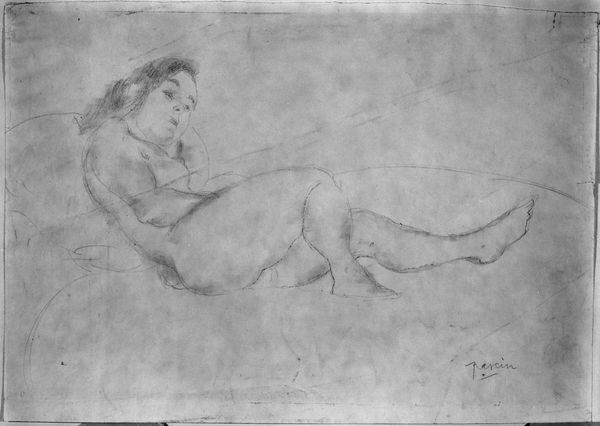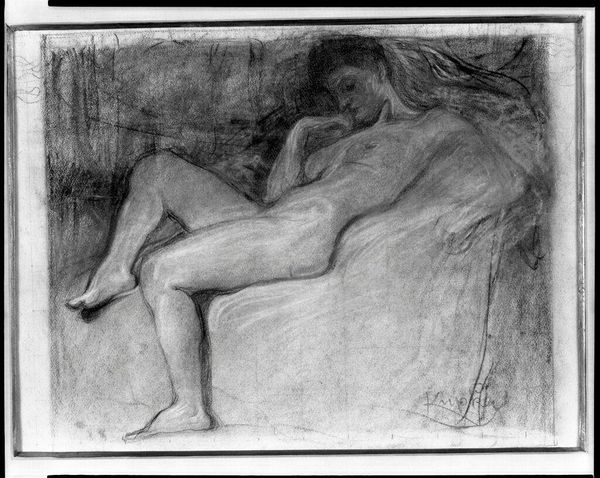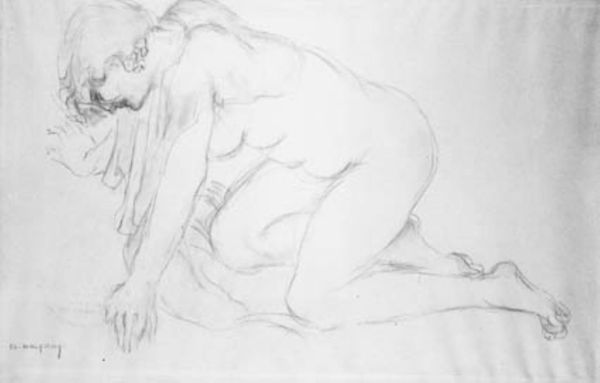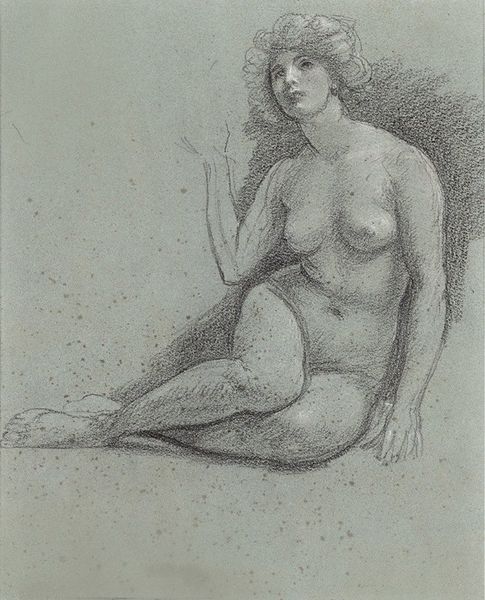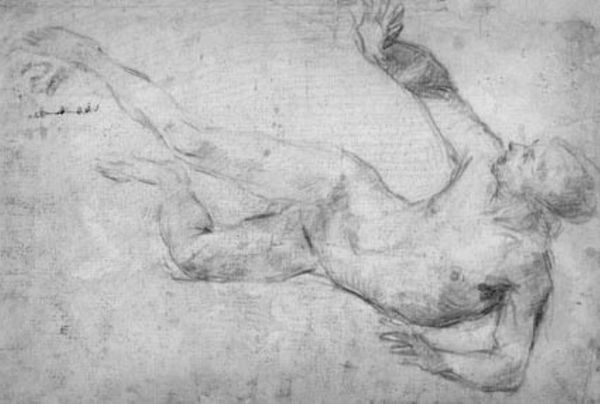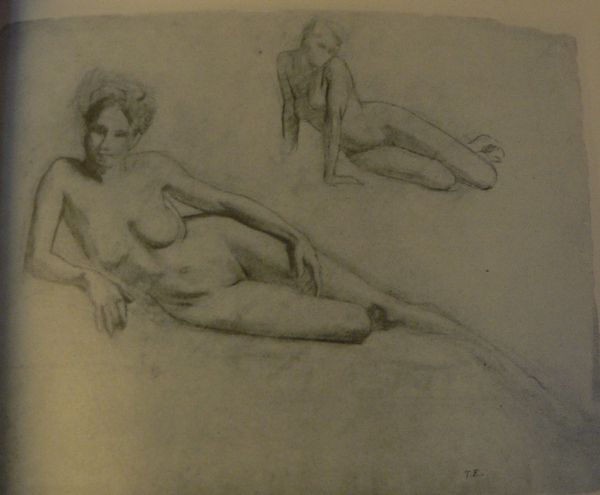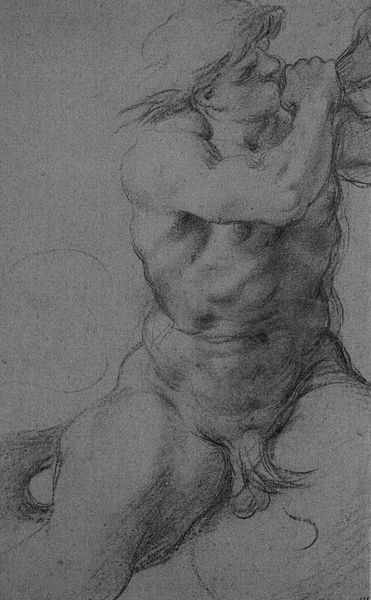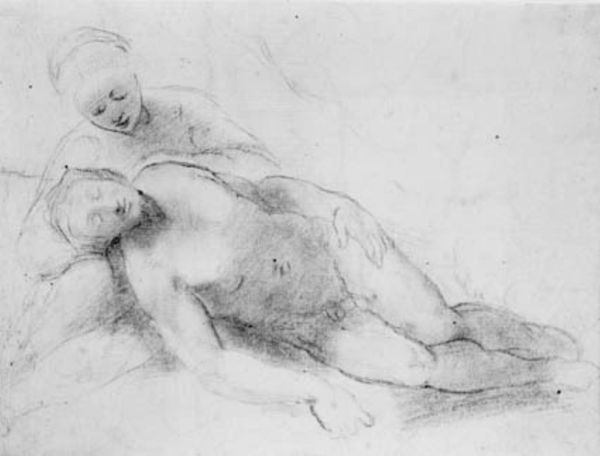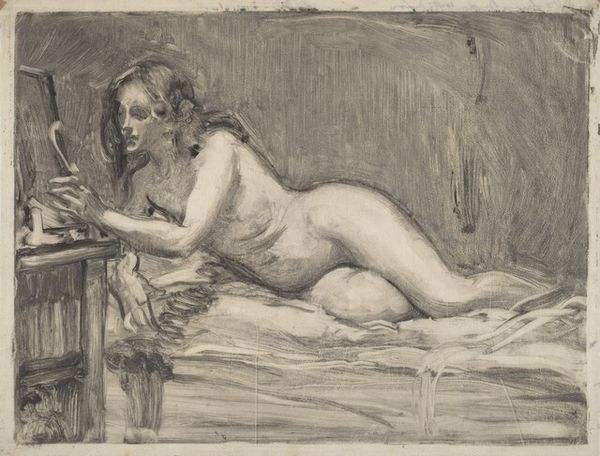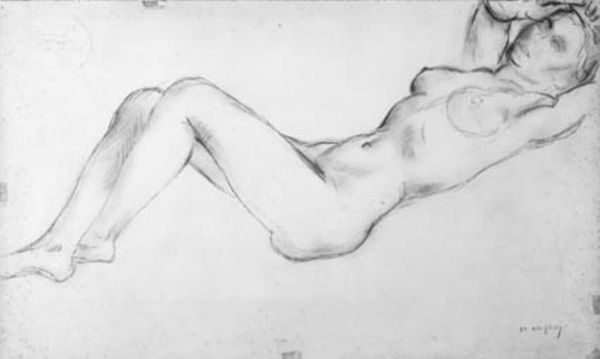
drawing, pencil, charcoal
#
portrait
#
drawing
#
allegory
#
pencil sketch
#
classical-realism
#
charcoal drawing
#
figuration
#
form
#
pencil drawing
#
pencil
#
line
#
portrait drawing
#
charcoal
#
history-painting
#
academic-art
#
nude
#
graphite
#
realism
Dimensions: 339 mm (height) x 209 mm (width) (bladmaal)
Curator: Here we have "Andromeda," a drawing from the period of 1650 to 1750, currently held here at the SMK. This piece provides an interesting look into interpretations of classical mythology during this time. Editor: My initial impression is one of languid melancholy. The lines are soft, the shading subtle, creating a sense of vulnerability and repose. It looks to be pencil and perhaps charcoal on paper. Curator: Indeed. Depicting Andromeda, bound and awaiting her fate, highlights the patriarchal structures embedded within these ancient narratives. Her helplessness, her objectification. Considering the context of its creation, how might interpretations of her role evolve across centuries? Editor: The form itself tells a story. Observe the artist’s skillful use of chiaroscuro to define Andromeda's figure against the background. The varying degrees of shading sculpt her body, emphasizing its contours and weight, drawing our eyes to her physical form before any narrative meaning. Curator: Yes, and that very emphasis is ripe for deconstruction. The male gaze is palpable. This artwork can spark vital conversations about the historical depictions of female bodies in art and how we challenge them today through a lens of empowerment and agency. The artist has also obscured certain areas, like her feet, further complicating the visual narrative. Editor: True. But what is communicated through this conscious obfuscation, this strategic deployment of line and shadow? Perhaps it speaks to the incompleteness of the image, its function as a sketch—a study in progress rather than a finished, definitive statement. The piece becomes a kind of diagram, demonstrating technique rather than dictating meaning. Curator: But can we truly separate technique from the ideological frameworks that inevitably shape its application? The historical implications must also be considered; after all, her mythological tale is inherently about female victimhood, and it’s presented as this quiet form study. Editor: A fair point. Yet, seeing it this way enhances, not diminishes, the work's engagement. Viewing Andromeda, even in graphite, through multiple interpretive filters brings so much more to light. Curator: It’s an act of continual excavation.
Comments
No comments
Be the first to comment and join the conversation on the ultimate creative platform.
